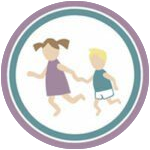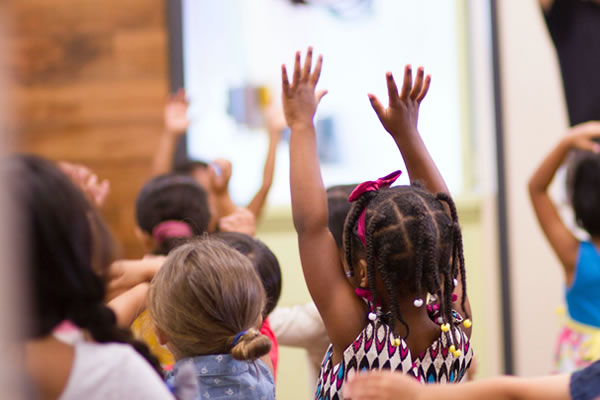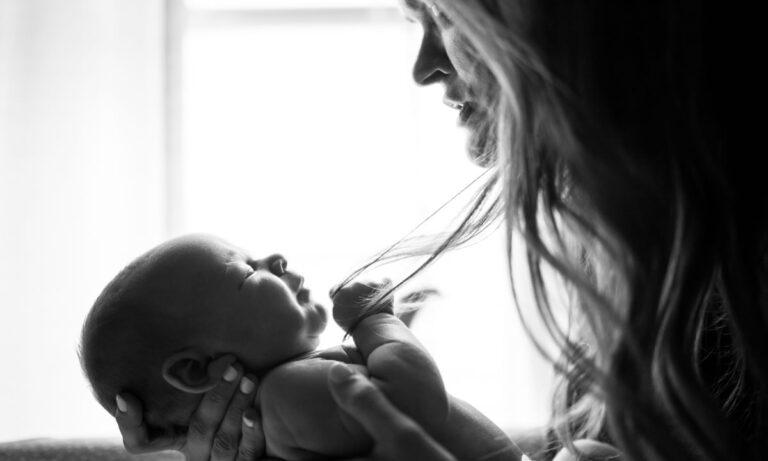As a parenting guide, I often get calls from bewildered and confused parents who say, “My baby was so angelic. Then one day the “monster” came out. I did everything right. He was born peacefully, he is still nursing on demand, still sleeps next to me, and I carried him all of the time. Why is he becoming so difficult now (at age 2, 3, or 4)?”
What has happened is actually a wonderful result of a relationship of trust and a deep bonding fostered by healthy attachment. The young child trusts her parents absolutely, and in that trust, she rightly assumes that they are on her side and that she is safe and welcome to spread her wings. The way young humans spread their wings, however, is not always convenient for adults.
It is not convenient when the toddler needs to play with mud, experiment with water, take things apart, exert much energy, or when he needs to be watched, held, and read to for hours. Most attachment parents do accept inconveniences with love when the child is an infant and a baby. It is not convenient when the baby drools on us, gets us wet, messes the floor with food, or wakes us up seven times a night – yet in our trust, we can see that those are her needs, and in our commitment to provide attachment, we accept those needs with love and without judgment. We don’t try to teach our baby to stop drooling or to stop crying for her needs to be met. The transition from a helpless baby to an active toddler can mislead parents into a change in approach, from one of total trust and acceptance to one of teaching and struggle.
One father confessed to me that he regretted the attachment approach he and his wife had practiced with their daughter. At age four, she was “wild and demanding” while their friend’s child, who “grew up in a crib” and attended daycare, was “so cooperative”…
Because I have heard this report many times from different parents, I cannot say that this is just a difference in the children’s personalities. The real question is whether that other child is really cooperative, or is she actually compliant and resigned? Is the bonded and trusting child really “wild and demanding” or simply alive, trusting, and assertive? Maybe the difficulty is not in the child but in our attitude and approach as parents. Maybe what is needed is an extension of the attachment attitude with all the trust, validation, and respect that comes with it – for many more years.
While many aspects of the more intensive attachment period do begin to fade as the child grows, there are some parental traits that remain essential: trust, leadership, and compassion. If we can retain these qualities in our parenting, then we will find life with toddlers a lot less stressful and profoundly fascinating.
We may recall that we trusted our baby. We didn’t insist that he learn to hold a spoon before he was ready or walk before he chose to. Later on, we didn’t insist that he talk before he was able to talk. Attachment is being “in tune” and responding to the child at each stage, trusting that his intention to mature is even more urgent than ours. The toddler is already in a rush – pushing her even faster to live up to our expectations can only give her a feeling of failure, resulting in lowered self-esteem and difficult behavior. With an attitude of trust, we can continue to assume that whatever the toddler does is what she needs to do – just as we trusted her as a baby. Of course, there are times when what the child needs to do is unsafe or otherwise unallowable. At those times we can validate the child’s feelings of disappointment, sadness, or rage, and when relevant, offer a similar but safer activity.
To better understand the leadership role of the parent, the best place to start is with what it is not. Leadership does not mean judgment of the child, nor is it controlling, teaching, or directing. Leadership is not an attempt to get the child to be a certain way for our convenience or approval. Instead, leadership is based on trust and respect for who the child is at each stage of her life. We can lead by creating a safe environment instead of limiting the child, as much as possible. We can provide leadership by noticing what the child needs and creating the conditions for meeting that need in a safe way. She may need a space to run and scream; she may need the outdoors in order to climb, get muddy, and throw stones in the water; she may need to experience independence and autonomy by making a mess of her toys or clothes. She also needs us to stop her from taking unsafe or unsuitable actions. She relies heavily on this kind of leadership because without it she cannot dare to spread her wings further and further.
When leadership is insufficient, the child feels he has no one to rely on and trust. The results of lack of appropriate leadership and lack of trust and respect add up over time and result in stress, self-doubt, and a sense of insecurity. The child feels lost and is likely to keep doing things that he hopes may force his parents into leadership – things that parents often perceive as “misbehaving” or as being overly demanding.
Most of this type of difficulty can be avoided with an attitude of trust and with leadership that is rooted in empathy and respect. No one likes to be told what to do – least of all toddlers. To respect this quality about the child, and to be on her side means to lead the way by following her needs based on her cues. Instead of trying to stop her from spilling water on the floor, we can provide a hose outdoors or time in the bathtub. Instead of getting upset with the child for refusing to put pajamas on, we can respond to her need to play the “run away from the pajama” game. Most of the time, a true leader follows.
As a result, the child trusts the parent, and when it is necessary to lead by negating the child’s choice of action, the child will follow more easily, knowing “my Mom/Dad is on my side”.
Most parents seem to be leaders when their child is a baby. We trust and accept the baby for who she is at each stage of her life, and at the same time we are also the managers of family life. When we have to leave the store – we leave, if the baby cries we hold, validate and meet the need. When a diaper needs to be changed we change it, and if the baby is upset by the process, we again validate her feelings as we change it. If she is putting an unsafe item in her mouth, we remove it and offer an alternative. The baby counts on us to guard her and stop her from doing anything that is not good for her or for others. She will try anything, counting on us to step in for her safety. She relies heavily on her parents. Likewise, the toddler also counts on us to guard her and stop her from doing damage.
Limits
I actually never use the words “setting limits” with my children or with parents I counsel. Sometimes we need to inform our children of limits that are not self-evident, yet we need not add anything to the existing limits of the physical and social reality. The frustration of the young child is so great precisely because she keeps encountering limits all the time. Much of modern life, with its technology, travel, and rush of stimuli, can be too intense for little ones. Not only does the overload create stress, but we are also forced to impose many limits that make no sense to the child and lead to stress-related behavior – such as requiring seat belts, stopping running in the parking lot, not allowing playing with electricity, and so on.
Happily, most limits are their own teachers and we need not intervene. In fact, part of our duty is to reduce the amount of helplessness in our child’s life, by removing a few limits from our environment. I find limiting the number of limits in a toddler’s life helps her flow more peacefully with those she is ready to encounter. At the same time, we need not take away challenges and frustration from the child’s life. We can trust his choices and inclinations. Frustration is a healthy stepping-stone for growth as long as it is not organized by anyone outside the child herself.
My youngest son Oliver, at 3 years, climbs rocks on the beach. I stand by ready. Soon he says “it’s scary” and asks me for help to come down. I assist him in descending off the rock, I do not lift him off easily to the ground. How does he know to be scared of being high? He learned about the physical limitations of gravity through falls, falling towers of blocks, and other daily experiences. Now he learned another dimension of gravity and heights. Life is the teacher. He created the challenge and the frustration, and he counted on me for his safety. If he didn’t trust me, he wouldn’t have dared to challenge himself. Self-confidence results from the ability of the child to move beyond his own limits.
By maintaining this attitude of trust, we can assume that whatever the child does is what she needs to do – just as we trusted the baby. We can keep our impositions to a minimum and guard the child’s safety as she meanders through the endless line of limits and breakthroughs. If an activity has to be interrupted, the child’s trust in our leadership will help her to accept the rarely-imposed limit, or we speak in a respectful way that gives her a sense of power over herself.
For example, when we have to leave the playground, we can say something like, “Your brother wants to go home and I am ready too. How many more times would you like to slide before we go?” This usually results in a child cooperating with her own free will because she feels free. She may say, “100 times” but is likely to stop after a few and say, “OK, I had enough,” because her mind is tuned to leaving, and the fact that we give her space prevents any need to resist. Even if a rare situation brings on an upset, we can validate and connect with the child.
We cannot save a child from life’s hurts and frustrations. It is not even desirable since it can only weaken him. What we can do is be compassionate companions on his unique and personal “ride”. He will then learn to experience life’s many faces and to value empathy and closeness. Most of all, he will gain emotional resilience and confidence in his ability to overcome adversity.
©Copyright Naomi Aldort










